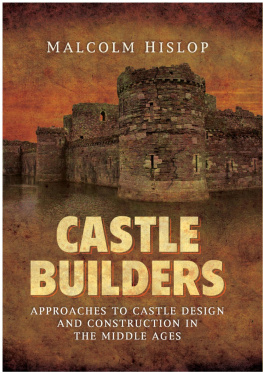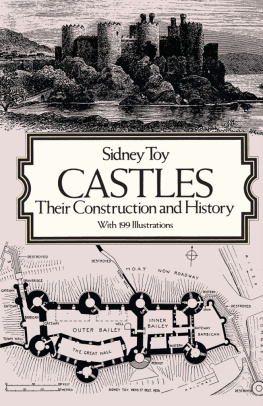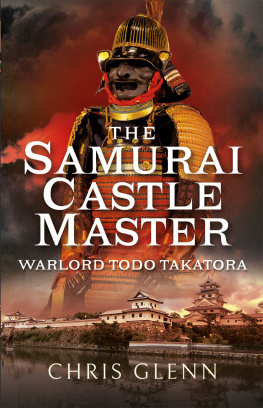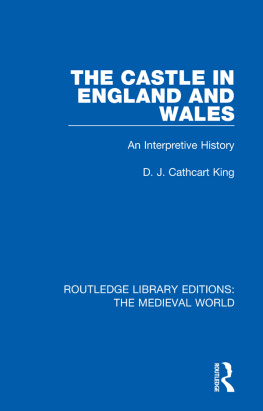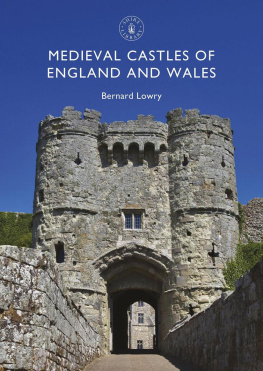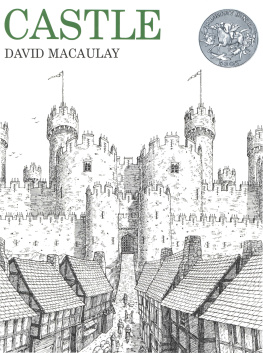Castle Builders
Castle Builders
Approaches to Castle Design and Construction in the Middle Ages
Malcolm Hislop
First published in Great Britain in 2016 by
Pen & Sword Archaeology an imprint of
Pen & Sword Books Ltd
47 Church Street
Barnsley
South Yorkshire
S70 2AS
Copyright Malcolm Hislop 2016
ISBN 978 1 78159 335 6
eISBN 978 1 47388 396 3
Mobi ISBN 978 1 47388 395 6
The right of Malcolm Hislop to be identified as the Author of this Work has been asserted by him in accordance with the Copyright, Designs and Patents Act 1988.
A CIP catalogue record for this book is available from the British Library
All rights reserved. No part of this book may be reproduced or transmitted in any form or by any means, electronic or mechanical including photocopying, recording or by any information storage and retrieval system, without permission from the Publisher in writing.
Pen & Sword Books Ltd incorporates the imprints of Pen & Sword Archaeology, Atlas, Aviation, Battleground, Discovery, Family History, History, Maritime, Military, Naval, Politics, Railways, Select, Transport, True Crime, and Fiction, Frontline Books, Leo Cooper, Praetorian Press, Seaforth Publishing and Wharncliffe.
For a complete list of Pen & Sword titles please contact
PEN & SWORD BOOKS LIMITED
47 Church Street, Barnsley, South Yorkshire, S70 2AS, England
E-mail: enquiries@pen-and-sword.co.uk
Website: www.pen-and-sword.co.uk
Contents
For Anne, with love
Preface
The book covers the medieval period from c. 1000 to c. 1450. The study area is primarily Britain, and, to a lesser extent, northern France, although there are occasional mentions of other continental sites. It is not intended to be a straightforward architectural history of the castle within the dates described, but it does contain elements of architectural history and one intention, where possible, has been to provide a chronological narrative of certain elements of the castle so that the book can be used as a more general work on its evolution than might be implied from the title.
Building measurements are generally given in metres with imperial equivalents; longer distances are given in miles. British sites are located with respect to their pre 1974 county boundaries. No particular significance should be attached to the use of the terms keep, great tower and donjon; they are used here as similes of one another in order to enrich the text, except in the index where great tower is used exclusively to refer to all three.
Acknowledgements
Anumber of individuals and institutions facilitated the task of preparing this work and bringing it to publication. Philip Davies Gatehouse website (www.gatehouse-gazetteer.info), John Kenyons Castles, Town Defences and Artillery Fortifications in the United Kingdom and Ireland: a bibliography 19452006, and the Castle Studies Group Journal and Bulletin have all been invaluable sources of information. In addition, John Kenyon was kind enough to comment on a draft of the text and to make suggestions in respect of illustrations and sources. I am indebted too to Bob Meeson, Cadw and English Heritage for permission to publish a number of the illustrations; these are acknowledged in the individual captions.
Chapter 1
Introduction
From a retrospective and art historical viewpoint, the term castle builder may sometimes seem synonymous with master mason. That might be a broadly accurate supposition for the later medieval period, when castle building usually (though not always) meant building in stone. By that time, it was the master mason that normally had overall charge of a substantial castle-building project, while other building crafts played a subordinate role. However, it was not always so, and it is part of the purpose of this book to highlight the roles played by other major contributors to the development of castles, notably the carpenters and earthmovers, who at different times played a more significant part than the mason.
Although we know a good deal about the instigators of castle construction and their motives, we know less about the designers and craftsmen involved; for the most part they remain as anonymous as the builders of most parish churches. What we may be able to do, however, is to trace the influence of certain individuals in the architecture. Without documentary evidence this can be a precarious task, subject to many pitfalls, but the general principle that individual masters had identifiable repertoires of craft traits holds true.
Few building craftsmen worked exclusively on castles, but one specialist that was particularly associated with castles was the engineer. In a medieval context, the term engineer is not one that can be readily defined in all cases. The responsibilities of Ailnoth the engineer (fl. 11571190), the keeper of Westminster Palace during the reign of Henry II, were primarily architectural, and his recorded building activities are mostly domestic in nature. On the other hand, it is clear that many engineers, including Ailnoths contemporary Urricus (fl. 11841216), were essentially makers of siege engines.
There are, then, two strands to the title, but there are a number of well-documented instances to show that some engineers, including another of Ailnoths later contemporaries, Elias of Oxford (fl. 11861203), were adept in the execution of both functions. Indeed, Ailnoths own appointment in 11751176 to dismantle Framlingham and Walton castles (Suffolk) provides a hint of a background in military engineering. It is reasonable to suppose that the makers of siege engines, who were skilled in the destruction and circumvention of fortifications, might also turn their minds to improving the design of defensive works, on the grounds that expertise in field ordnance involves an understanding of defensive installations and vice versa. Further, once the principle of the engineer as a castle builder had been established, it was perhaps only a short step from the design of a castles defences to the design of its domestic buildings.
While it might be expected that makers of timber-framed siege engines would have been carpenters, by Ailnoths time the term engineer in an architectural sense transcended individual crafts, being applied to both carpenters and masons. Ailnoths contemporary, Maurice (fl. 11741187), Henry IIs master builder at the castles of Newcastle-upon-Tyne and Dover, who we only know as a castle builder, was described as a mason at Newcastle and an engineer at Dover. Ailnoth himself was not identified with any particular craft, but the range of his structural responsibilities included lead roofing, stonework, timberwork and glazing. The Kings servant, Elias of Oxford (fl. 11861203), was variously styled carpenter, mason and engineer. In the last quarter of the thirteenth century and the first quarter of the fourteenth century, Richard the engineer, of Chester, one of Edward Is key men in his north Wales castle-building programme, was responsible for works in both wood and stone, including bridges, castles and siege engines, although, like Ailnoth, his own craft status is unknown.
The ambiguous roles of such men are a reminder of how wide a range of skills a medieval master builder might be expected to encompass. One is reminded of the description of William of Sens, the architect of the eastern arm of Canterbury Cathedral from 1174, as a craftsman most skilful in both wood and stone. Familiarity with more than one branch of building craftsmanship was a powerful asset when masterminding a major architectural project, and particularly so where castle building was concerned. The array of expertise encompassed by castle builders at different times included earthwork construction, carpentry, masoncraft and water engineering, as well as all the minor building crafts. While the master builder might be able to call on the services of all kinds of building craftsmen, it was he who had to devise a schemes overall strategy and the manner in which the various aspects of the design fitted together.
Next page
